Your gateway to endless inspiration
China - Blog Posts
For Pride Month, the story of the cut off sleeve
So, there is a story about Han Dynasty China, a time and place where bisexuality was the norm. Emperor Ai was having a nap in a traditional long-sleeve robe with his male companion, Dong Xian.
Eventually, the Emperor awoke from his nap, but his lover had not. To avoid waking him up, he instead chose to cut off the sleeve Dong Xian was sleeping on.
This spread through the court, and in tribute the Emperor's courtiers cut off one of their own sleeves. The tale eventually gave way to the saying “the passion of the cut sleeve", a euphemism for intimacy between two men.
So Pakistan and India are getting ready to throw down again. Not good considering they tend to do ethnic cleansing and all. India blames Pakistan for a terror attack (maybe we don’t know India is blocking investigations) and with India being a racially motivated fascist state filled with rhetoric that makes modern day maga blush it ain’t looking good for Muslims over there.
That said Pakistan already said their nukes are fueled and aimed right at modi’s vagina if he so much as queefs in their direction.
We also have the issue of trump backing India and China backing Pakistan cause trump is a dickhead who hates the brown people when they Muslim and china hates India for territorial reasons. My guess is a proxy war is coming with China using the distraction to snatch Indian land they want while daring the US to try something and laughing at India failing to stop them cause India has meat but not much else.
Like China does have parody with the US while India is using Russian T90s which …. Fuckin lol
So it wasn’t the Russians and Ukrainians starting WW3 it might be India and Pakistan meaning I owe a buddy fifty bucks and blowjob sadly


Sean bienvenidos japonítasarqueológicos a una nueva entrega en esta ocasión nos desviamos un poco del contenido que suelo hacer, dicho ésto comencemos. - ¿Cómo afectará esto a la arqueológia e historia? ¿Y a la economía? Antes que nada ¿Por qué la situación está así? Esto viene desde el siglo XIX, cuando China sede Taiwán tras perder la Guerra sino-japonesa estará bajo dominio 1895-1945, desde el momento en ese momento se creó la República independiente de China. - Razones por las que China quiere Taiwan: 1°Incorporarla de nuevo a su territorio. 2° Taiwán es la gran exportadora de microchip a nivel mundial. 3° Esto amenazaría el territorio de Japón, ya que las islas de Okinawa está Cerca. Además, china dirá que le están amenazando sus fronteras. - ¿Cómo creéis que afectará a la economía mundial? - Os deseo un cordial saludo y nos vemos en próximas publicaciones de Arqueología e historia japonesa. - 考古学的ジャポナイトは、新しい記事へようこそ。 - これは考古学と歴史にどのように影響しますか? そして経済へ? まず、なぜこのような状況になったのでしょうか。 これは、19 世紀に中国が日中戦争に敗れた後、台湾を占領したときのことであり、独立した中華民国が誕生した瞬間から、1895 年から 1945 年まで台湾は支配下に置かれることになります。 - 中国が台湾を欲しがる理由: 1°テリトリーに戻す。 第 2 位 台湾はマイクロチップの世界最大の輸出国です。 3° 沖縄の島々が近くにあるので、これは日本の領土を脅かすだろう. さらに、中国は国境が脅かされていると言うでしょう。 - 世界経済にどのような影響を与えると思いますか。 - 今後の考古学と日本史の出版物でお会いしましょう。 - Archaeological Japonites are welcome to a new installment, this time we deviate a bit from the content that I usually do, with that said, let's begin. - How will this affect archeology and history? And to the economy? First of all, why is the situation like this? This comes from the 19th century, when China seized Taiwan after losing the Sino-Japanese War, it will be under rule from 1895-1945, from the moment at which the independent Republic of China was created. - Reasons why China wants Taiwan: 1° Incorporate her back into her territory. 2nd Taiwan is the world's largest exporter of microchips. 3° This would threaten the territory of Japan, since the islands of Okinawa are nearby. In addition, China will say that its borders are being threatened. - How do you think it will affect the world economy? - I wish you a cordial greeting and see you in future publications of Archeology and Japanese history.

Sean bienvenidos, japonistasarqueólogos, en esta ocasión os expongo una situación en lo que respecta al mundo occidental y oriental, dos caras de una misma moneda, ya sea historia del arte, arqueología, geografía, entre otros temas, vengo a exponer el gran desequilibrio que hay en lo que respecta a estas dos corrientes, dicho esto pónganse cómodos que comencemos. - En la foto de mi mano izquierda podemos ver claramente los países que engloban las corrientes de extremo oriente, que es el tema en particular de la publicación y al margen derecho podemos ver algunos países de occidente, entre otros. Voy a coger las palabras más sabias para explicar este desequilibrio de corrientes, que por desgracia, parece que los occidentalistas están implantando la idea del siglo XIX como que lo occidental es mejor que extremo oriente, ya que oriente al estar en la Cochinchina, pues se le tiene en un rango inferior y no es el caso. Si le preguntamos a la gente de la calle, el 90% de la gente si le preguntaras cosas de dicho tema, lo más probable es que no sepan nada, porque carecen de la ignorancia, pero que no es culpa de ellos, sino de cómo se han enseñado las cosas por parte de los gobiernos de los distintos países occidentales. - Otros puntos que vamos a resumir en este párrafo, serían la gente que lo difunde y fermenta la occidentalización, erradicando la orientalización de extremo oriente normal que la gente que divulgamos cosas, de extremo oriente, no tengamos el apoyo suficiente o solo de una parte. - Espero que os haya gustado, posdata estoy dando mi punto de vista, lo más probable es que haya gente que no lo comparta, otros si y otros se mantengan al margen nos vemos en próximas publicaciones. - ようこそ、日本の考古学者の皆さん、この機会に、私は美術史、考古学、地理など、同じコインの裏表である西洋と東洋の世界に関する状況を紹介します。これら 2 つの流れに関しては、そうは言っても、安心して始めましょう。 - 私の左手の写真には、この出版物の特別なテーマである極東海流を含む国々がはっきりと見え、右側にはいくつかの西洋諸国などが見えます。私はこの流れの不均衡を説明するために最も賢明な言葉を使うつもりだが、残念なことに、西洋主義者たちは、東洋はコーチシナにあるので西洋のほうが極東よりも優れているという19世紀の考えを植え付けているようだ。それは彼をより低いランクに置いているのですが、そうではありません。街行く人々に尋ねると、90%の人が、この話題について尋ねると、ほとんどの場合、彼らは無知なので何も知らないということですが、それは彼らのせいではなく、物事がどうなっているのかということです。さまざまな西側諸国の政府によって教えられてきました。 - この段落で要約するその他の点は、それを広め、西洋化を発酵させ、極東の東洋化を根絶する人々です。極東から物事を広める人々が十分な支持を得ていないのは正常ですまたは片側からのみ。 - 気に入っていただければ幸いです。追記 私は私の見解を述べていますが、おそらくそれを共有しない人もいれば、共有する人もいれば、近づかない人もいるでしょう。今後の出版物でお会いしましょう。 - Welcome, Japanese archaeologists, on this occasion I present to you a situation regarding the Western and Eastern world, two sides of the same coin, be it art history, archeology, geography, among other topics, I come to expose the great imbalance that There is in regards to these two currents, having said that, make yourself comfortable and let's begin. - In the photo on my left hand we can clearly see the countries that encompass the Far Eastern currents, which is the particular topic of the publication, and on the right side we can see some Western countries, among others. I am going to use the wisest words to explain this imbalance of currents, which unfortunately, seems that the Westernists are implanting the idea of the 19th century that the Western is better than the Far East, since the Orient is in Cochinchina, since it is It has him in a lower rank and that is not the case. If we ask people on the street, 90% of the people, if you asked them things about this topic, the most likely thing is that they do not know anything, because they lack ignorance, but that is not their fault, but how things have been taught by the governments of the different Western countries. - Other points that we are going to summarize in this paragraph would be the people who spread it and ferment Westernization, eradicating the orientalization of the Far East, it is normal that the people who spread things, from the Far East, do not have enough support or only from one side. - I hope you liked it, postscript I am giving my point of view, most likely there are people who do not share it, others do and others stay away, see you in future publications.




Sean bienvenidos japonistaarqueológicos a una nueva actualidad del país del sol naciente, esto será algo nuevo que voy a comenzar espero que os guste, dicho esto pónganse cómodos que empezamos. - El portavoz del gobierno de Japón, Matsuno Hirokazu:” dijo el lunes que el país continuará tomando medidas integrales para monitorear sus aguas territoriales cerca de las Islas Senkaku en el Mar de China Oriental”. - Debido a que dos barcos chinos habían estado 72 horas y 45 minutos en aguas territoriales japonesas frente a la prefectura de Okinawa, dichas islas son reclamadas por China y Taiwán, el gobierno japonés sostiene que las islas son una parte inherente del territorio de Japón, en términos de historia y derecho internacional. - Conclusión: Por lo que podemos observar, China quiere los territorios más que por temas históricos los quiere porque quien controle Taiwan controla el mundo, además la antigua Formosa es aliada de japón y de estados unidos a mi me huele a propaganda china. - Espero que os guste y nos vemos en próximas publicaciones de historia, arqueología, cultura nipona, ¿Qué opinan ustedes? abro la mesa debate. - 日出ずる国から新しいニュースへようこそ。これから新しいことを始めますが、気に入っていただければ幸いです。 - 日本政府の松野博一報道官: "は月曜日、東シナ海の尖閣諸島付近の領海を監視するために包括的な措置を取り続けることを明らかにした。" - 中国船2隻が沖縄県沖の日本領海で72時間45分も過ごしていたため、中国と台湾が領有権を主張している同諸島を、日本政府は歴史的にも国際法上も日本固有の領土と主張しています。 - 結論:私たちが見る限り、中国は歴史的な理由よりも、台湾を支配するものが世界を支配しているから領土が欲しいのであって、旧フォルモサは日本やアメリカの同盟国であり、私には中国のプロパガンダの臭いがする。 - 歴史、考古学、日本文化の次の出版物でお会いしましょう、どうでしょうか? 私は討論のテーブルを開く - Welcome to a new news from the land of the rising sun, this will be something new that I am going to start, I hope you like it, that said make yourselves comfortable and let's get started. - Japan's government spokesman Matsuno Hirokazu:" said on Monday that the country will continue to take comprehensive measures to monitor its territorial waters near the Senkaku Islands in the East China Sea." - Because two Chinese ships had spent 72 hours and 45 minutes in Japanese territorial waters off Okinawa prefecture, the islands are claimed by China and Taiwan, the Japanese government maintains that the islands are an inherent part of Japan's territory, in terms of history and international law. - Conclusion: As far as we can see, China wants the territories more than for historical reasons, it wants them because whoever controls Taiwan controls the world, and the former Formosa is an ally of Japan and the United States, which smells like Chinese propaganda to me. - I hope you like it and I will see you in the next publications of history, archaeology, Japanese culture, what do you think? I open the debate table.





Sean bienvenidos japonistasarqueológicos, una nueva entrega en esta ocasión hablaremos del Tanabata una vez dicho esto pónganse cómodos que empezamos. - ¿Qué es el tanabata?¿Cuándo se celebra?¿Cuál es su origen?El tanabata, surge en China en la dinastía Han que posteriormente llegará a Japón durante el período Nara (710 d.C.- 794 d.C.) a través de la nobleza ,pero no fue hasta el período Edo (1600-1868) que se hizo popular. Esto lo podemos ver en el anime como es el caso de Doraemon (ドラえもん), pero hay montones de animes que tratan esta temática una película que trata estos temas podrían ser: Amor de Gata, Kimi no Nawa, Kimetsu no Yaiba podría hacer una lista que nunca acabaria de la cantidad de anime que hay que trata el Tanabata. ¿Qué es el tanabata? Cuenta la leyenda de Orihime y Hikoboshi que solo se pueden ver la séptima luna del séptimo mes, se crea un puente que les permite cruzar y estar juntos ¿Cuándo se celebra? Se celebra el 7 de julio y lo más característico de esta festividad son los fuegos artificiales y en Tokyo por ejemplo: el templo Zojoji, pero cualquier templo lo podréis apreciar muy bien. tanzaku ¿En qué consiste? Se coloca un trozo de papel con tu deseo y se colocan en árboles de bambú. Para terminar me gustaría mencionar que hay una constelación que representa esta maravillosa historia. - Espero que os haya gustado y nos vemos en próximas publicaciones que pasen una buena semana. - ようこそ、日本の考古学者たちへ。今回は七夕についてお話します。 - 七夕とは何か、いつ祝うのか、その起源は? 七夕は中国の漢の時代に始まり、奈良時代に貴族を通じて日本に伝わった。 ドラえもんなどのアニメに見られるが、このテーマを扱ったアニメはたくさんある:七夕を扱ったアニメは枚挙にいとまがない。織姫と彦星は七夕の日にしか会えないという伝説がある。 いつ祝うの?月7日に行われます。このお祭りの最大の特徴は花火で、東京では増上寺が有名ですが、どこのお寺でもよく鑑賞できます。 短冊 短冊とはどんなものですか?願い事を書いた紙を竹に貼る。最後に、この素晴らしい物語を象徴する星座があることをお伝えしたい。 - それでは、また次の記事でお会いしましょう。
Welcome to the Japanese archaeologists, this time we are going to talk about Tanabata, so make yourselves comfortable and let's get started. - What is tanabata, when is it celebrated, what is its origin? Tanabata, which originated in China in the Han dynasty, later came to Japan during the Nara period (710 AD - 794 AD) through the nobility, but it was not until the Edo period (1600-1868) that it became popular. This can be seen in anime such as Doraemon (ドラえもん), but there are lots of anime that deal with this theme, a movie that deals with these themes could be: Love of Cat, Kimi no Nawa, Kimetsu no Yaiba I could make a list that would never end of the amount of anime out there that deals with Tanabata. what is tanabata? Legend has it that Orihime and Hikoboshi can only see each other on the seventh moon of the seventh month, a bridge is created that allows them to cross and be together. When is it celebrated? It is celebrated on the 7th of July and the most characteristic of this festivity are the fireworks and in Tokyo for example: the Zojoji temple, but you can appreciate it very well in any temple. tanzaku What does it consist of? You put a piece of paper with your wish on it and place it on bamboo trees. Finally, I would like to mention that there is a constellation that represents this wonderful story. - I hope you liked it and see you in the next posts have a nice week.





Sean bienvenidos japonsistasarqueológicos, a una nueva entrega cultural en esta ocasión os voy comentar la festividad, del día del niño que se celebra cada 5 de Mayo que se llama Kodomo no Hi y se escribiríaこどもの日 una vez dicho esto pónganse cómodos que empezamos. - ¿Cuándo surgió el día del niño?La festividad, surge en el siglo VIII d.c en lo que respondería al periodo Heian, posiblemente tendría influencia de china al respecto ya que se basó en Tango no Sekku. El Sekku se basa en los puntos de inflexión de las estaciones y se basa en la teoría de los cinco elementos del yin y el yang en China. - La forma tradicional de celebrarlo es ofrecer ofrendas estacionales a los dioses, rezar y comer juntos los productos de segunda mano.En el período Kamakura, en pleno auge de los samurais, se convirtió en un evento importante para orar por el crecimiento y la salud de los niños y la prosperidad de la familia, con adornos como armaduras, cascos, serpentinas de carpa y muñecos festivos. - Ahora a continuación mencionaré algunos dulces de los que se suelen comer el 5 de Mayo: Kashiwa mochi,Chimaki, beko mochi, akumaki , pastel no koi. - Espero que os haya gustado y nos vemos en próximas publicaciones y que pasen un feliz día del niño.
-
今回は、毎年5月5日に行われる「こどもの日」というお祭りについてお話しします。「こどもの日」とは、「こどもの日」と書いて「こどもの日」と読みます。 - こどもの日」の起源は、紀元8世紀の平安時代にさかのぼりますが、「端午の節句」が元になっていることから、中国の影響を受けている可能性があります。節句とは、季節の変わり目を表すもので、中国の陰陽五行説に基づくものです。 - 季節のお供え物を神に捧げ、祈り、中古品をみんなで食べるのが伝統的な祝い方です。 武士ブーム真っ只中の鎌倉時代には、甲冑や兜、こいのぼり、祝い人形などを飾り、子供の成長や健康、家族の繁栄を祈る大切な行事となりました。 - 柏餅、ちまき、べこ餅、あくまき、こいのぼりのお菓子です。 - 気に入っていただけたなら幸いです。今後の記事でお会いしましょう。そして、楽しい子供の日をお過ごしください。
-
Welcome to a new cultural delivery in this occasion I am going to comment on the festivity, the day of the child that is celebrated every 5th of May that is called Kodomo no Hi and it would be writtenこどもの日 once said this make yourselves comfortable that we begin. - When did Children's Day come about? The holiday, which dates back to the 8th century AD in what would be the Heian period, was possibly influenced by Chinese in this respect as it was based on Tango no Sekku. Sekku is based on the turning points of the seasons and is based on the five element theory of yin and yang in China. - The traditional way to celebrate it is to offer seasonal offerings to the gods, pray and eat second-hand goods together. In the Kamakura period, at the height of the samurai boom, it became an important event to pray for the growth and health of children and the prosperity of the family, with decorations such as armour, helmets, carp streamers and festive dolls. - Now here are some of the sweets usually eaten on May 5th: Kashiwa mochi, Chimaki, beko mochi, akumaki, no koi cake. - I hope you liked it and see you in future posts and have a happy children's day.




Sean bienvenidos mis queridos fanáticosarqueológicos a una nueva entrega de prehistoria Japónesa en esta ocasión nos trasladamos a la pregunta ¿Cuándo se originó el sintoísmo?. - Aunque parezca raro es una religión que se conformo durante el periódo Jōmon (17.500-300), para ser exactos a finales de dicho período y continua hasta nuestros días los dioses del sintoísmo, se les llama Kamis ( dios) ya que para los japoneses todo tenía un dios las montañas, ríos. - El sintoísmo tiene influencias chinas, coreanas de hay que tenga similitudes con el taoísmo, ¿Qué dos libros recogen la categoría de los Kamis? Son el Kojiki(713d.c) y el Nihonshoki(720d.c). - Espero que os guste y nos vemos en una próxima públicacion un cordial saludo. 🇯🇵 私の愛する考古学ファンを日本の先史時代の新作に歓迎します。今回は、神道がいつ始まったのかという質問に移ります。 - 奇妙に思えるかもしれませんが、縄文時代(17500-300)に形成された宗教であり、正確にはその時代の終わりに、今日まで神道の神であり、カミス(神)と呼ばれています。 日本人にとって、山や川にはすべて神がいました。 - 神道は中国、韓国の影響を受けており、道教との類似点があります。 カミスのカテゴリーに分類される2冊の本は何ですか? こうじき(713d.c)と日本書紀(720d.c)です。 - よろしくお願いします。次の出版物で心からのご挨拶を申し上げます。 🇬🇧 Welcome my dear archaeological fans to a new installment of Japanese prehistory, this time we move to the question, when did Shintoism originate? - Although it may seem strange, it is a religion that was formed during the Jōmon period (17500-300), to be exact at the end of that period and continues to this day the gods of Shintoism, they are called Kamis (god) since for the Japanese everything the mountains and rivers had a god. - Shintoism has Chinese, Korean influences, and there are similarities with Taoism. What two books are classified under the category of the Kamis? They are the Kojiki (713d.c) and the Nihonshoki (720d.c). - I hope you like it and see you in a next publication a cordial greeting.


Sean bienvenidos, a una nueva aclaración, arqueológica-histórica, en esta ocasión aclararemos y desmentir errores aplicados a la arqueología .¿Por qué la cerámica más antigua se encuentra en Asia y no en el mediterráneo?. - En cierto modo, muchas de las cosas más antiguas se encuentran en mesopotamia, pero no todo ya que muchas cosas surgieron en china y japón. En este caso, hablaremos de la cerámica, los vestigios más antiguos los podemos encontrar en el archipiélago nipón de hace 16.500 años de antigüedad durante el periodo Jōmon(Neolítico japonés lo que equivaldría al neolítico Europeo), eso era lo que se sabía hasta ahora, pero restos arqueológicos rescatados en una cueva de china, datan de una friolera de 20.000años, se tenía entendido que la cerámica apareció hace 10.000 años aproximadamente, ¿Por que se nos ocultan estos datos?, pues muy sencillo, porque no concuerdan con la recta cronológica estipulada, además de no generar interés para su estudio. - La foto número 1, son los restos de la cerámica china. - La foto número 2 es la cerámica de la cultura Jōmon. - Cualquier aportación siempre es bienvenida, ya que esta publicación sirve como aclarar ideas y para debatir. os deseo un buen día y un fuerte abrazo. - 新しい考古学と歴史の解明へようこそ。今回は、考古学に適用された誤りを明らかにし、否定します。なぜ最も古いセラミックが地中海ではなくアジアで見つかったのでしょうか。 - ある意味で、最も古いものの多くはメソポタミアで発見されていますが、中国と日本で発生したものほど多くはありません。今回は陶磁器についてお話しますが、16、500年前の縄文時代(ヨーロッパの新石器時代に相当する日本の新石器時代)の日本列島で最も古い遺跡がありますが、これは今まで知られていましたが、中国の洞窟で救出された考古学的遺跡は、なんと2万年前のもので、約1万年前に陶磁器が登場したと理解されていましたが、なぜこれらのデータが私たちから隠されているのでしょうか。直線と一致しないため、非常に単純です。その研究への関心を生み出さないことに加えて、年代順に規定された。 - 写真1は中国の陶器の残骸です。 写真2は縄文文化の陶器です。 この投稿は説明と議論として役立つので、どんな入力でもいつでも歓迎します。良い一日と大きな抱擁をお祈りします。 - Welcome to a new archaeological-historical clarification, this time we will clarify and deny errors applied to archeology. Why is the oldest ceramic found in Asia and not in the Mediterranean ?. - In a way, many of the oldest things are found in Mesopotamia, but not all as many things arose in China and Japan. In this case, we will talk about ceramics, the oldest remains can be found in the Japanese archipelago 16,500 years ago during the Jomon period (Japanese Neolithic, which would be equivalent to the European Neolithic), that was what was known until now, but archaeological remains rescued in a cave in China, dating from a whopping 20,000 years, it was understood that the ceramics appeared approximately 10,000 years ago, why are these data hidden from us ?, Well very simple, because they do not agree with the straight line stipulated chronological, in addition to not generating interest for its study. - Photo number 1 is the remains of Chinese pottery. Photo number 2 is the pottery of the Jomon culture. Any input is always welcome, as this post serves as clarification and discussion. I wish you a good day and a big hug.
Sean bienvenidos, japonistasarqueologicos a una nueva entrega de historia nipona en la que os explico la evolución del artefacto Tanegashima, una vez dicho esto pónganse cómodos, que empezamos. - Fue introducido por los portugueses en 1543, en pleno periodo Muromachi desde la isla que lleva su mismo nombre, el polvo negro químico fue inventado por los chinos en el siglo IX, se usaba para los fuegos artificiales, después se trasladó a otros ámbitos. - Se cuenta que cuando llegó a Japón, un herrero vendió a su hija para poder producir dicho artefacto, era un producto raro y poco efectivo, no todos los samuráis la utilizaban, ya que muchos preferían, todavía, las técnicas tradicionales más efectivas, además la consideraban un elemento deshonroso. El hecho más notable fue el 28 de junio de 1575 en Nagashino, en la Provincia de Mikawa. El clan de Oda Nobunaga se enfrentaba contra el clan Takeda conocido por su temible caballería, Oda Nobunaga emplearía unas empalizadas para proteger a sus soldados de las sucesivas cargas, en esta batalla se usaría el artefacto en masa. Esto lo podéis ver en el famoso videojuego de Total War: Shogun 2. - Esperó que os haya gustado y nos vemos en próximas publicaciones que pasen una buena semana. - 日本の考古学者の皆さん、種子島の遺物の変遷を説明する新しい日本史へようこそ。 - 室町時代中期の 1543 年に、同じ名前の島からポルトガル人によって導入されました。化学黒色火薬は 9 世紀に中国人によって発明され、花火に使用されましたが、その後他の用途に移りました。地域。 - 彼が日本に到着したとき、鍛冶屋はその工芸品を製造できるように娘を売ったと言われています。それは希少で非効率な製品でした。多くの武士が依然として最も効果的な伝統的な技術を好んだため、すべての武士がそれを使用したわけではありません。彼らはそれを考慮しました不名誉な要素。 最も注目すべき出来事は、1575 年 6 月 28 日に三河国長篠で起こった。 織田信長の一族は、恐ろしい騎兵で知られる武田家と対峙しました。織田信長は連続突撃から兵士を守るために柵を使用しました。この戦いでは、アーティファクトが一斉に使用されました。 これは、有名なビデオ ゲーム Total War: Shogun 2 で見ることができます。 - 気に入っていただければ幸いです。今後の投稿でお会いしましょう。良い一週間をお過ごしください。 - Welcome, Japanesearchaeologicalists, to a new installment of Japanese history in which I explain the evolution of the Tanegashima artifact. Having said that, make yourself comfortable, let's begin. - It was introduced by the Portuguese in 1543, in the middle of the Muromachi period from the island that bears the same name. The chemical black powder was invented by the Chinese in the 9th century. It was used for fireworks, then it moved to other areas. - It is said that when he arrived in Japan, a blacksmith sold his daughter to be able to produce said artifact. It was a rare and ineffective product. Not all samurai used it, since many still preferred the most effective traditional techniques. They considered it a dishonorable element. The most notable event was on June 28, 1575 in Nagashino, Mikawa Province. Oda Nobunaga's clan faced the Takeda clan, known for its fearsome cavalry. Oda Nobunaga would use palisades to protect his soldiers from successive charges. In this battle, the artifact would be used en masse. You can see this in the famous video game Total War: Shogun 2. - He hoped you liked it and see you in future posts, have a good week.
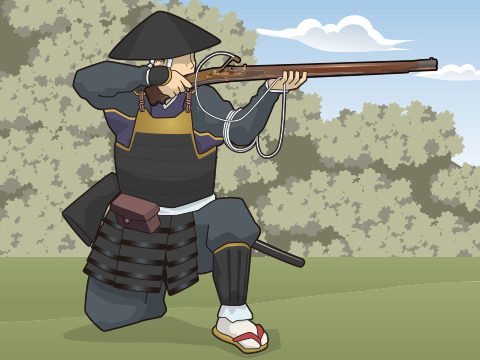

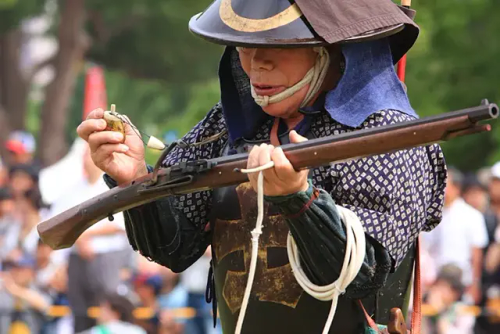
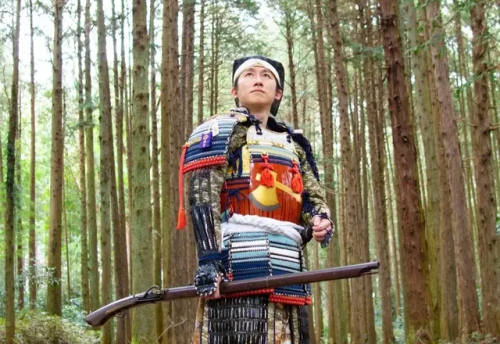
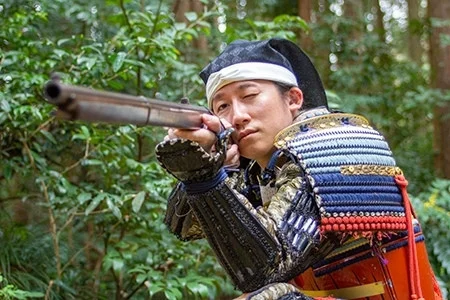

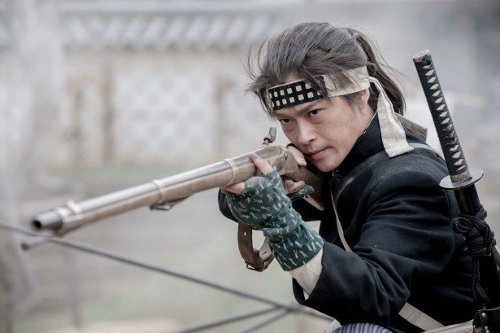





Sean bienvenidos, japonistasarqueologicos a una entrega de arquitectura japonesa una vez dicho esto pagase cómodos que empezamos. - Esta pagoda se localiza en Kyoto y data del siglo XV, a este tipo de pagodas se les llama Tahōtō, se caracteriza por tener solo dos plantas, las ventanas tienen forma de flor de loto, clara influencia de china y Korea. - Espero que os haya gustado y nos vemos en próximas publicaciones que pasen una buena semana. - ジャポニスタサルケオロギコスの皆さん、日本建築の配信へようこそ。そうは言っても、安心して始めてください。 - この塔は京都にあり、15 世紀に建てられました。このタイプの塔は多宝塔と呼ばれ、2 階しかないのが特徴で、窓は蓮の花の形をしており、明らかに中国と韓国の影響を受けています。 - 気に入っていただければ幸いです。今後の投稿でお会いしましょう。良い一週間をお過ごしください。 - Welcome, japonistasarqueológicos to a delivery of Japanese architecture, having said this, pay comfortable that we start. - This pagoda is located in Kyoto and dates from the 15th century, this type of pagoda is called Tahōtō, it is characterized by having only two floors, the windows are in the shape of a lotus flower, a clear influence from China and Korea. - I hope you liked it and see you in future posts, have a good week.
Alternative Titles for Shang Chi
Shang Chi and the fellowship of the ten rings
Or
Wenwu and the legend of the ten cockrings

reminder that the "taiwanese independence movement" (with 🇳🇫 emoji) is a nazist group that invent the myth of a "singular taiwanese ethnicity" much like hitler's idea of aryan people and advocate for an ethnostate
there's no "taiwanese ethnicity", even if you take only indigenous populations, they are not one and the same thing (theyre classified into various tribes for a reason) -- and the autonomy of indigenous people of taiwan is very solvable without the nazi mvmt
the KMT atrocities are very solvable without the nazi mvmt
pretty much all social issues the cult is "aiming to solve" by estabilishing a nazi ethnostate are solvable without it.
and let's not forget they are more xenophobic/racist and homophobic on average than like many other political groups in taiwan while also claiming to be progressive.
repeat after me: taiwan independence advocates are nazis (much like their red neighbors in beijing)
i know it's pride month and all but also today (june 4) is the 34th anniversary of tiananmen square massacre which we should keep in mind as (PRC) china becomes more and more imperialist
tankies hit the bricks i will steal your kneecaps if you interact
Cnetizens: "The sound of the Chinese guzheng is like flowing water, soothing to the ears as if giving them a gentle massage.""Listening to it makes me wanna time-travel to ancient times or a xianxia world to fall in love don’t stop me." (These are all performance-level guzheng, the sound quality is amazing)
















